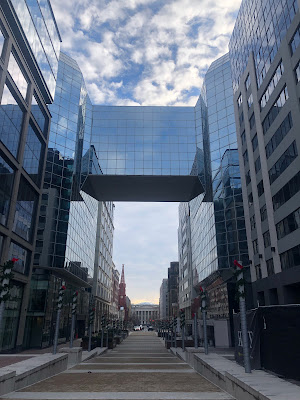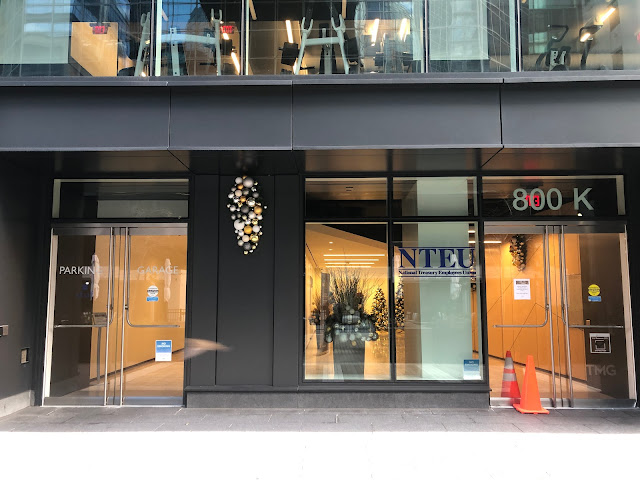*Originally published on another blog of mine, Miscellaneous Notes, now republished here with slight edits and modifications*
FEATURING — TechWorld
Today is Sunday, and the Christmas Eve, which means I could only undertake a very brief excursion. I have read in an old post office catalogue that there used to be an USPS branch called “TechWorld” at 800 K St NW across from what is now the DC History Center, within walking distance from where I live. And with a cool name like that, you can hardly pass by without looking into it for a little bit.

The “TechWorld” complex as it stands (mostly) today came into being in the mid-1980s when Giuseppe Cecchi, an Italian architect who developed the (in)famous Watergate Complex (which, in my opinion, looks far more pleasant), got the idea to create “a complete on-stop store for high-tech products” in DC’s historical downtown. His plan, however, met opposition from the outset. The City’s Zoning Commission objected to its glassy exterior; the Smithsonian hated the glass passageway bridge; and several other citizen groups were concerned with turning a section of 8th St into pedestrian-only space.
From what I saw, Cecchi clearly got his way — his bridge still overlooks a pedestrian walkway devoid of pedestrians, and much of its glass exterior is still in place. I should also mention its troubled construction: Of its four quadrants that together form the squarish complex, the first, housing the Renaissance Washington Hotel, went up in 1986, the second in 1989, and the third in 1991, but “money ran out” before the fourth was complete, so it was sold in 2004 and built somewhat differently.
As for what’s inside — I do not know whether TechWorld lived up to its name, or if Cecchi’s vision of it being some integrated marketplace for electronics was ever realized. The northwestern quadrant remains a hotel to this day, though is now managed by the Westin instead. The southeastern quadrant was built by the International Brotherhood of Electrical Workers (IBEW) which bought this section in 2004, and is still the seat of its union headquarters. The other two sections now host a few pretty good restaurants, a gym and some governmental workspace, but most storefronts are empty and stripped for redevelopment. Their past occupants cannot be known, as those two quadrants were sold to the Meridian Group in 2014, renamed Anthem Row, and thoroughly renovated on the inside.

One aspect of this renovation that appears to have been particularly unwelcome was the removal of a lovely Chinese rock garden in one of TechWorld’s courtyards. Designed by Alfred Liu, who has many other DC landmarks under his belt (including the nearby DC Chinatown Friendship Archway), it did carry an authentically Chinese air, consisting of many peculiarly shaped rocks and trees that would not look out of place in any city park in China. With the garden gone, there is little to remind you of the nearby Chinatown, save the several Chinese inscriptions on the architecture’s exterior pedestals that spell, with surprising accuracy, the four cardinal points and their corresponding mythical creatures — “East with the Green Dragon,” “West with the White Tiger,” “South with the Red Phoenix,” and “North with the Black Tortoise.” The calligraphy is bad, as if the characters were carbon copies of Comic Sans, but the spirit is to be appreciated.
Finally, a word about the nonexistent post office. I couldn’t find its specific closure date, but a local news article reported in December 2011 that the TechWorld branch had been taken off a potential closure list, which apparently did not save it from eventual demise between now and then. It is also uncertain whether this branch was for retail or just mail processing because different sources of information conflict on this point.
